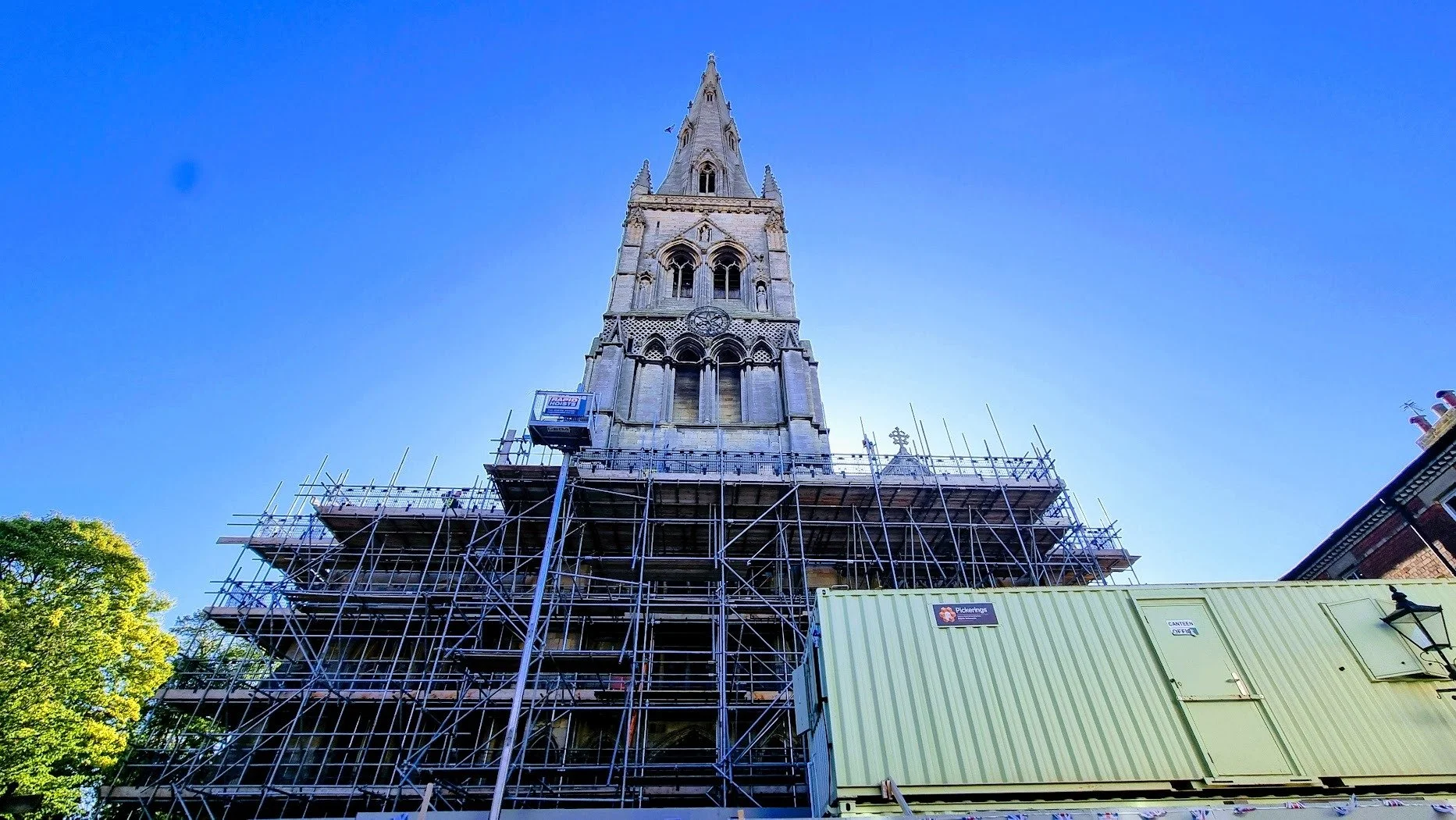Re-Awakening from the Spire: What Nottinghamshire’s Tallest Church Teaches Us About Time
By Barry Richardson
On the way home from work today, I found myself staring at St Paul’s Cathedral — the ‘modern replacement’ for the one lost to the Great Fire of London. Once the tallest building in the city, it now sits quietly, dwarfed by the steel and glass of the City’s skyline and constrained within the neighbouring buildings.
Newark’s skyline is modest by comparison, but no less meaningful. As you rise from the flat plain of the Trent and look back, three structures come into view — each tall, each telling a different story.
The Spire
St Mary Magdalene still commands the view. Not the tallest man-made structure in the county, but the most enduring. A civic compass. A spiritual anchor. A reminder that height isn’t always about dominance — it’s about presence.
The Crane
Rising over the ex-M&S site, it’s temporary, skeletal, and full of promise. A symbol of transition. Of regeneration. Of the town’s willingness to build forward while looking back.
The Chimneys
Staythorpe Power Station’s twin stacks loom on the horizon — functional, distant, quietly monumental. They don’t ask to be admired, but they shape the silhouette all the same.
The ‘Three Towers’ of Newark…
The Passage of Time
There’s half a millennium between these three structures. The chimneys may never earn a heritage listing, and the crane is fleeting — needs-based and ‘in the moment’. Soon it will vanish, and the skyline will return to its familiar rhythm: the graceful spire and the less glamorous, but no less impactful, chimneys.
Curious, I turned to Google and found the ten tallest structures in Nottinghamshire. The results surprised me.
Top of the list: Eastcroft Incinerator. A chimney. 91 metres of industrial pragmatism, built to burn what we no longer need… though perhaps there’s something sacred in that too.
Next: Victoria Centre Flats A, rising to 75 metres. Residential towers from the 1970s — built for shelter, not spectacle.
Third: Our own St Mary Magdalene. 72 metres of carved stone and conviction. A spire that’s stood for centuries, pointing not to function, but to faith.
Cities like Paris, Athens, and Kyoto restrict high-rise development to protect their skylines. Newark doesn’t need formal legislation (yet!).
The skyline isn’t just a vertical contest — it’s a record of priorities. What we built, when we built it, and why. From spires to chimneys, from sanctuary to incineration, it’s all there. You just have to look up.
Returning to Ground Level
As we move toward the re-opening of St Mary’s, where internal changes will soon become familiar to visitors and parishioners, and as the security hoardings fall like scales from an animal shedding a temporary skin, the graceful splendour of the familiar will emerge once again.
On the train home, I found myself wondering: What would we ask for if we had the money, the will, and the vision to do what our ancestors once did — if there were no St Mary’s to curate, nurture, and restore?
Would we dream as the medieval masters did? Doubtful. We lack that kind of vision these days, as cost, speed, and utility collide to diminish our aspirations.
Would we build solely for spiritual purposes? Probably not in isolation — perhaps with a sprinkle of aspiration to teach.
Would we build for performance, artform curation, and civic duty? Partly. These functions are served by the Theatre, the Town Hall, the Register Office, and the Arts Museum — notwithstanding the sensational array of art on show in the stained glass, memorials, and architecture within St Mary’s.
Would it be designed for permanence — or for this generation alone? Most buildings today lack the concept of permanence, aspiring only to serve today’s needs and maybe tomorrow’s.
In truth, it would likely be a bit of everything. Practical. Adaptable. Probably transient — built for the moment, not the millennium. It would be unlikely to command the presence of St Mary’s, and would sit awkwardly for a few years as we grew familiar with it — and we would quietly lament what it could have been…
Final Reflection
So here’s the question that keeps nagging me: If we were to build a new church in Newark today, would we build St Mary’s?
Let’s be honest — cost alone would be staggering. A conservative estimate, using similar materials and craft skills, would land somewhere north of £60 million. And even then, it wouldn’t look like St Mary’s. That’s not how we build anymore. It might be graceful, yes — perhaps two storeys high — but it wouldn’t carry the carved echoes of memory, the centuries of conviction etched into stone.
It would be ecologically friendly. Multi-use. Welcoming. Flexible. Built for today, maybe tomorrow. Not for the millennium.
And that’s precisely why the Reawakening of St Mary’s makes sense — even now. It’s all those things, and more. It’s also a commanding, visually arresting beacon of continuity and beauty, right in the heart of Newark.
I, for one, am excited as I await the re-opening, to enjoy the new, and the old stand proud. To see the Church contribute to the here and now, respond to current needs, and — led by rich tradition — adapt to the future.
St Mary’s won’t just dominate the skyline. It will embrace and enrich the essence of Newark: warm, friendly, inviting. A place leaning into its rich history, and creating new history through its links with yesterday and today informing tomorrow.


